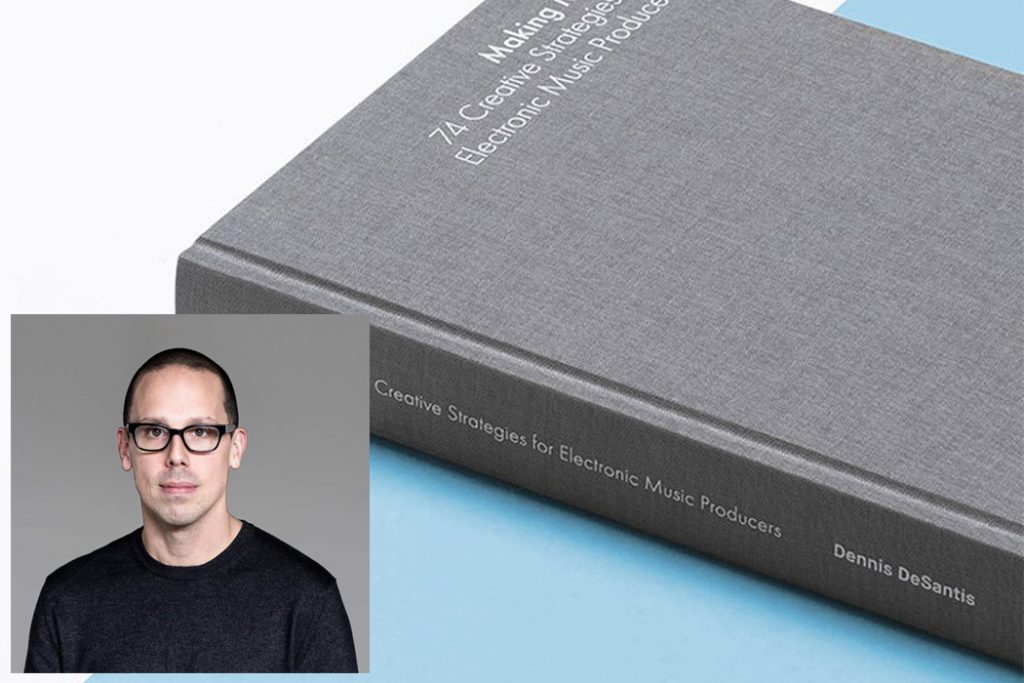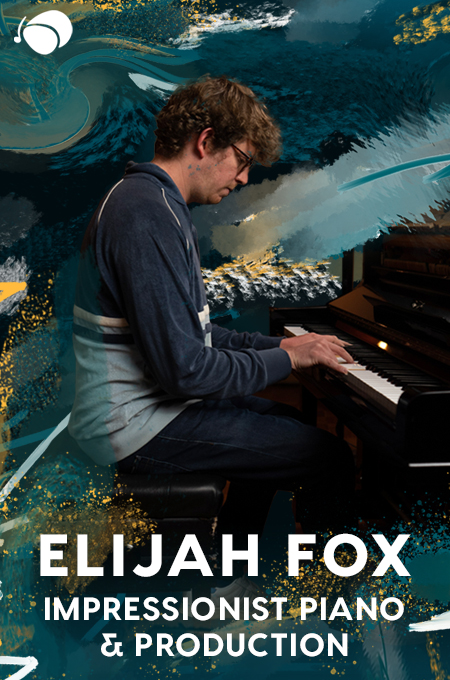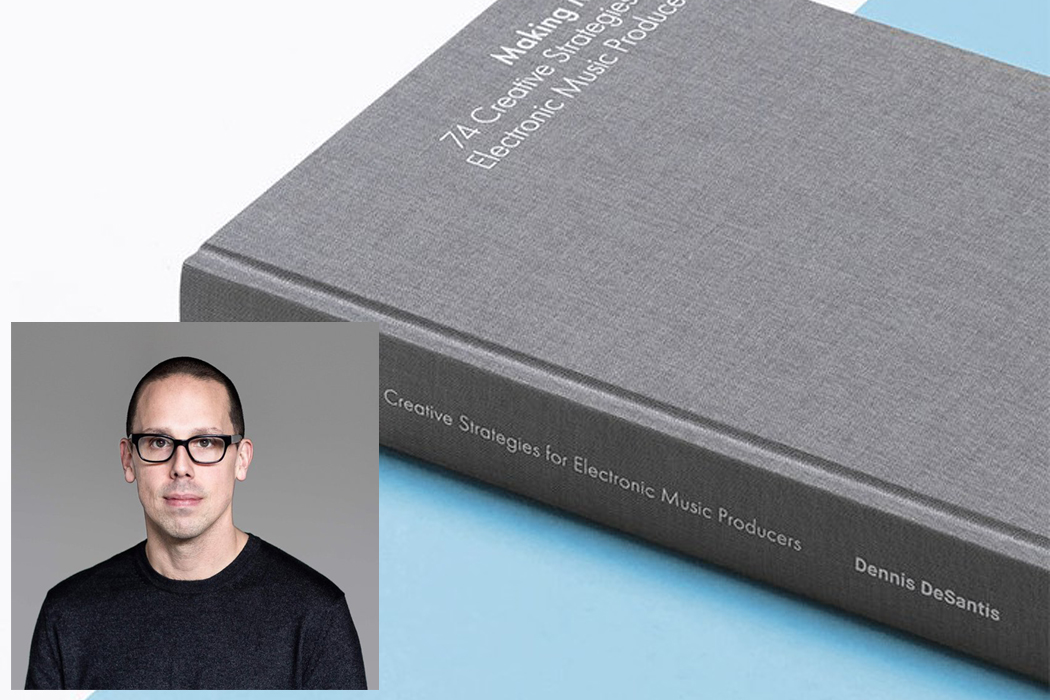
+ Master the tools and techniques of producing pro-level electronic music and audio in Ableton Live with Soundfly’s course, Intro to Music Production in Ableton Live.
If you’ve used Ableton Live, you’ve most likely read at least part of the Ableton manual. This document, found in every copy of the software, lays out the most important aspects of the DAW and is powerful not only for the explaining the countless functions of the software, but also because it is written so clearly and concisely.
Unlike so many manuals, it’s actually a pleasure to read.
Readers of the manual have Ableton’s head of documentation, Dennis DeSantis to thank for this fantastic piece of writing. Recently I had the opportunity to interview him for the DJLAB (Costa Rica) blog and ask him some questions about the his new projects and the creative process.
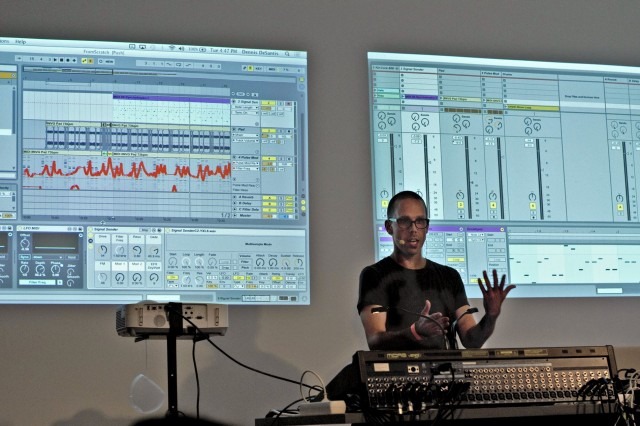
“Music production is at least in part a collection of practices that need to be directly engaged with. We take this for granted when considering almost any other musical practice, such as learning to play an instrument.”
Paola: Ableton has recently introduced some fantastic online musical learning tools like Learning Music and Learning Synths, which we use here at DJLAB as part of our courses. These are not about learning the Ableton Live software, but about learning musical and production concepts and have some really great visuals as well as hands-on exploration. Do you feel that this type of learning through touching and doing is superior to reading about a concept or passively watching a tutorial?
Dennis: Yes, encouraging people to do things is a fundamental part of the approach with these tools. Watching tutorials passively is a useful way to learn certain aspects of the things we’re teaching. But music production is at least in part a collection of practices that need to be directly engaged with. We take this for granted when considering almost any other musical practice, such as learning to play an instrument.
Watching a tutorial about playing piano, for example, is useful for gaining a better understanding of the domain, learning about the practices of other pianists, or getting inspired. But to learn to play piano, you have to actually play piano. With these sites, we’re trying to put the theory and practice close to each other, both physically (the things you’re learning are near the places to play with them) and pedagogically (at any given moment, the environment is designed to be at the same level of complexity as the concepts you’re learning).

P: Your book Making Music: 74 Creative Strategies For Electronic Music Producers is a fantastic guide for musicians and really any creative people looking for inspiration in art. Which, in your opinion, are the three most important strategies that you present in the book?
D: My hope is that this question has a different answer for every reader. The goal with the book was to lay out a collection of seemingly disconnected ways of thinking about music, with the hope that some of them would resonate with a reader such that they’d find their way out of whatever creative block made them pick up the book in the first place.
So for one reader, a particular strategy might be totally uninteresting because it doesn’t make any sense in their musical practice, or they’ve tried it and the results were terrible, etc. But to someone else, that same strategy might be critical to making a breakthrough.
Also, the strategies cover a wide range of specificity. Some of them are quite narrow, focusing on a particular musical or production technique. Others are much more broad and are less about doing a particular thing than they are about thinking a different way.
For the narrow ones, you could conceivably listen to a piece of music and hear that it’s an example of the strategy. But for the broader ones, the results (if there were any at all) would be much more personal and also diffuse — a listener probably wouldn’t be able to hear them directly.
But after all that hedging, I can still tell you my personal favorites!
I like “Write Drunk, Edit Sober” because I think it’s a pretty universally useful creative practice, and for much more than just music. “Process vs. Product” is interesting because it’s hyper-opinionated and potentially controversial. I should have also included one called “Product vs. Process,” just to clarify that there are no right answers. Finally, “Thinking like an Amateur” is good advice for anyone who’s started to find that something they used to love now feels like a chore.
P: In this book you talk about musicians who often get inspired by other music. With globalization, in some regions of the developing world, for example in Latin America, it is very common to see producers composing music based on genres or styles from Europe or the US. Many times, unfortunately, this leads to very imitative music. How do you think that composers/producers can borrow from global styles without crossing the line into simply imitating the art of a different place (and often time).
D: This is a great question with no easy answers!
I think part of the work is in really thinking about the cultural contexts in which a particular style of music exists — including the one you consider your own “home” style:
- What is the music’s function in its culture?
- What are the implications of not appropriately addressing this function in your approach to the music?
- What systems of power and privilege exist between the music cultures in question?
Besides cultural topics though, there are also musical ones. What does it mean to borrow from global styles? It might help to think of the music in terms of separable “features,” and then consider what it might mean to borrow them independently. For example:
- If you take only the rhythmic character of one style, how does this differ from taking only the melodic ideas?
- Or timbral/sound design/instrumentation ideas?
- Do some of these types of borrowing feel more or less imitative than others?
Finally, it’s probably unfair to assume that imitation is always a bad thing. This might be an intentional and legitimate musical goal.
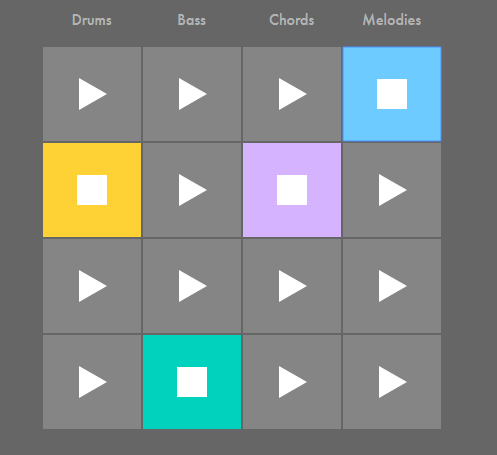
P: Let’s talk about your personal work. How do you balance all your creative projects? Do you focus all your energy on one at a time or do you prefer to work on several projects at once?
D: I don’t really think I balance them very well, actually. I tend to focus on one thing enough to make it move in a direction, but then shift my focus to another thing before I’ve established enough inertia to keep going. This means that when I eventually come back around to the first thing, I need to spend an unnecessary amount of time getting back into it at a level of depth that makes the work meaningful again.
Lately, I’m spending a lot of time with Max programming in order to enable some very specific, idiosyncratic things I’m interested in exploring in my own music. Ideally, I’d also be spending equal amounts of time practicing instruments and working on original music, and I probably will once I’ve inevitably shifted out of this phase.
“I should probably read my book.”
P: You have created/written and produced some fantastic music. Are you working on any new music at the moment, and if so, when will we be able to hear it?
D: Thanks! Per the above question, I’m currently spending more time building tools for working on music than actually working on music. But this could change at any moment!
More generally, I’m always working on something musical in some way and my computer is full of sketches at various levels of completion. One of the realities of how my life has unfolded is that I don’t need to depend on music production for income. This is great, because my creative work can then be treated completely like a hobby, which allows for a natural (and I think very healthy) separation of work and play. But this is also terrible because I know how motivating external pressure can be for actually getting things finished. I should probably read my book.
P: Finally, you’re originally from the US and were based in New York for quite a while before moving to Berlin several years ago. What are some of the differences in the electronic music cultures between the two cities that you have observed? Are there differences in the creative processes of New York and Berlin musicians?
D: I don’t go out much, and didn’t in New York either, so I’m definitely not an expert in the electronic music cultures in these cities. One thing both places have in common is that they’re hubs for people from all over the world, and who necessarily bring with them traces of pre-existing musical practices, so the notion of what a local practice might look like is probably very different today than it might have been when the electronic music culture in those cities was very new and very local.
One thing both cities have in common is a shared cultural richness; there’s always a lot of music happening and there’s interesting cross-pollination between seemingly divergent scenes. But it’s hard to know how much of this is a product of the local musical cultures and how much of it came here with musicians who’ve come from elsewhere.
*One last bit of housekeeping. Soundfly’s got an all new online course that teaches you all of the tools to get started making pro-level music and audio using Ableton Live, one of the most versatile DAWs out there. Check out Intro to Music Production in Ableton Live here or sign up for our email list to stay up to date with new courses and offers.
Improve all aspects of your music making on Soundfly.
Subscribe to get unlimited access to all of our course content, an invitation to join our members-only Slack community forum, exclusive perks from partner brands, and massive discounts on personalized mentor sessions for guided learning. Learn what you want, whenever you want, with total freedom.
—
This interview was compiled and translated into Spanish by Paola Sánchez Quirós, the editor of the DJLAB (Costa Rica) blog. She is a writer, student of communications and electronic music based in San Jose, Costa Rica. For the Spanish language interview, click here.
